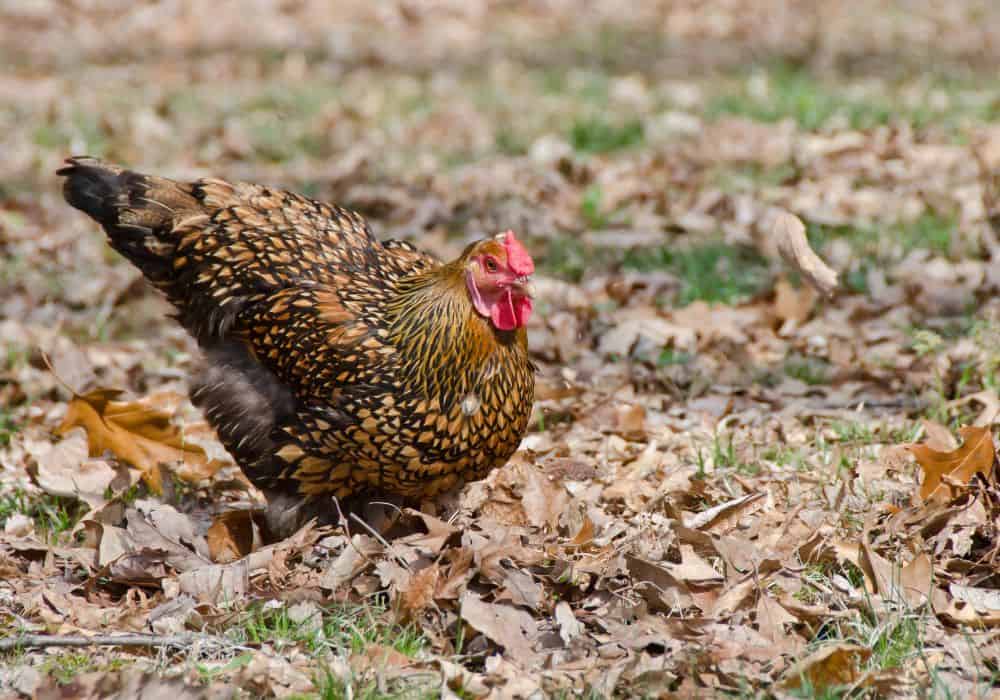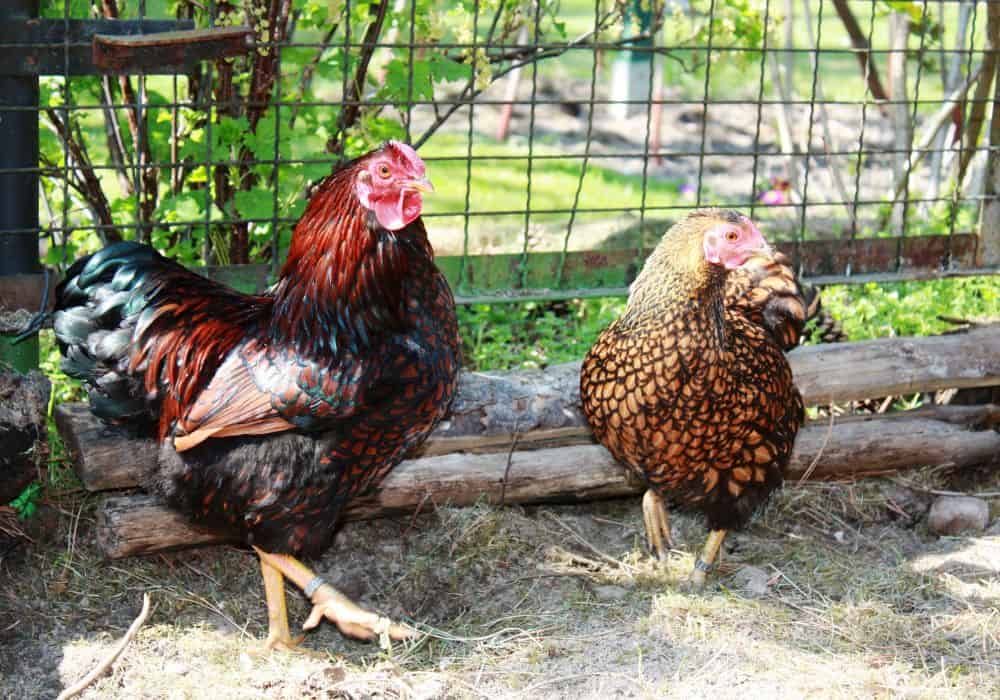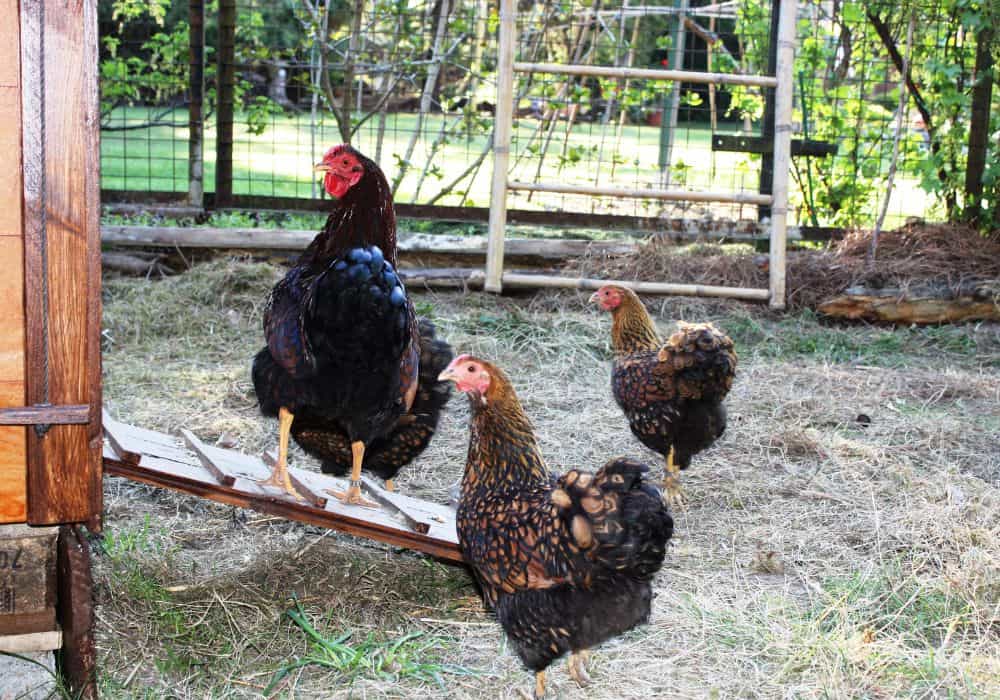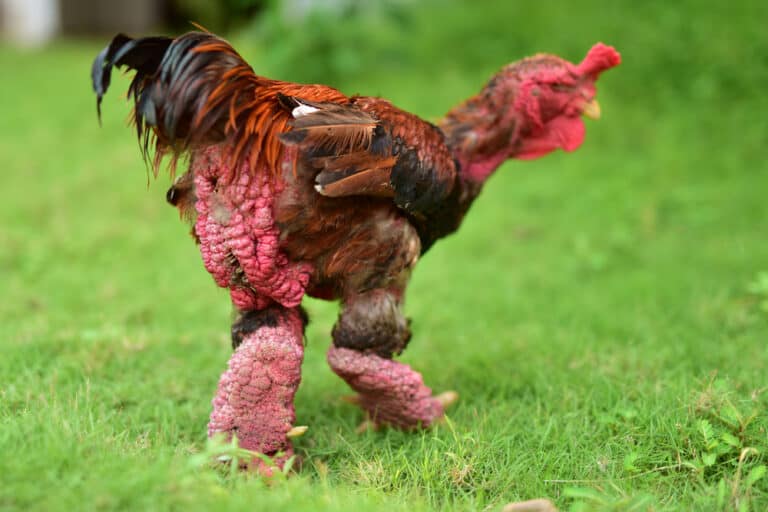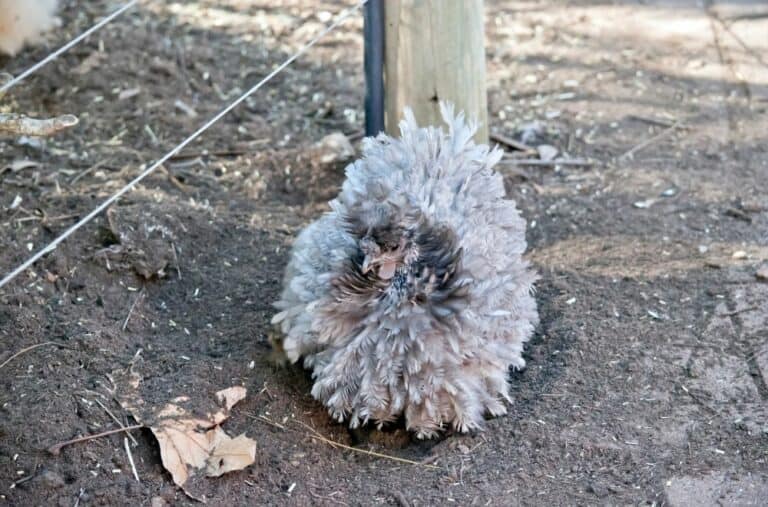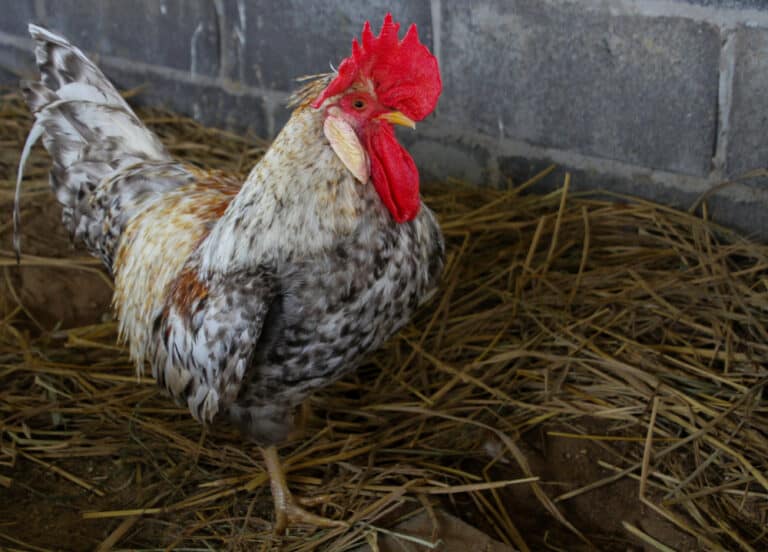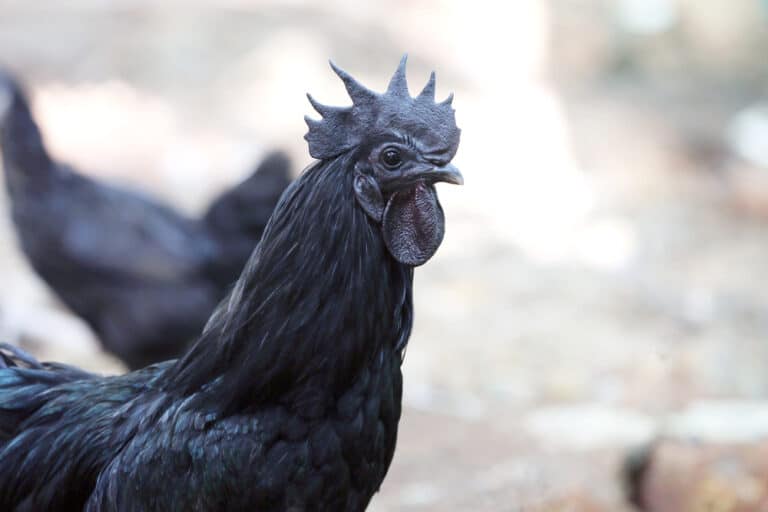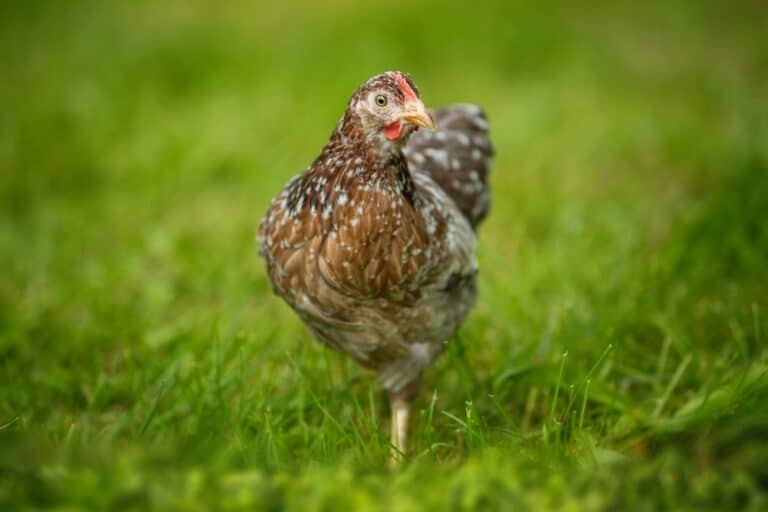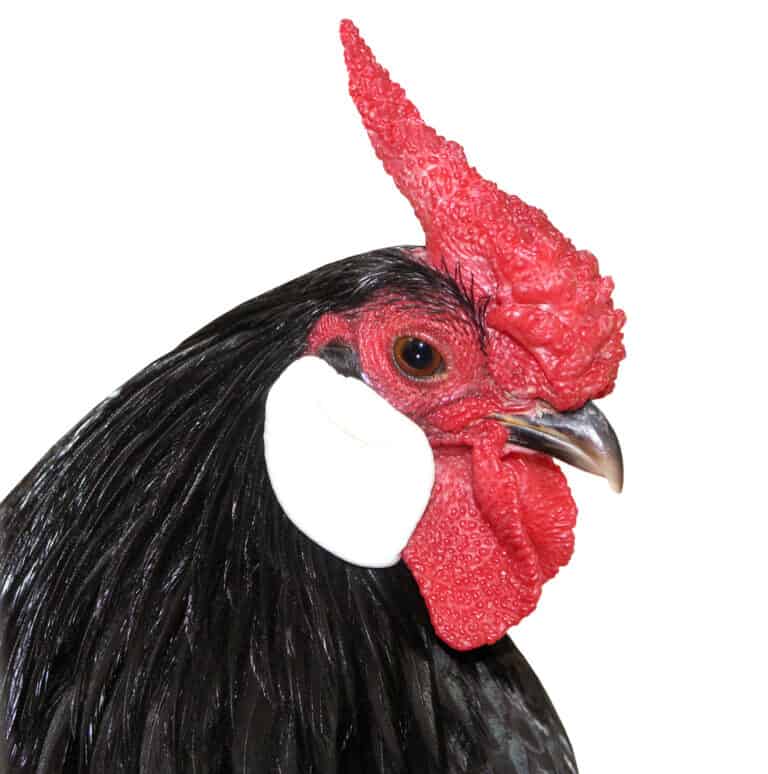Golden Laced Wyandotte chickens are one of the most recognizable and beautiful chicken breeds in America. They are a fairly recent breed with wonderful plumage and a dual purpose. What are they like as a breed and should you consider having Golden Laced Wyandottes in your flock?
If you are considering keeping Golden Laced Wyandottes or just would like to know more about the breed, you have come to the right place. In this article, you will find information on the history, behavior, features, and coop setup for Golden Laced Wyandottes.
What Are Golden Laced Wyandottes Like?
While some people raising chickens may primarily be interested in their egg-laying abilities, it is important to consider their temperament also, especially if you have children or live in an urban area where loud flocks could annoy your neighbors.
If you are looking for a chicken breed that will make a great pet as well as an egg producer, then the Golden Laced Wyandottes may not be the right breed for you. While they can be docile around familiar keepers, they will not like being picked up and cuddled. They can also be aloof around humans.
The Golden Laced Wyandotte chicken is generally safe to have around children. However, since small children may try to pick the chickens up, you should watch them, remembering that Wyandottes will not appreciate being picked up or cuddled. Males can also be more aggressive and protective of their flock.
They have strong personalities, which usually places them near, if not at the top, of the pecking order. In a mixed flock, once the pecking order has been established, the Golden Laced Wyandottes will usually ignore birds from other breeds, preferring their own kind.
Activity Level
The Golden Laced Wyandottes are self-sufficient birds that are very active and are happiest foraging for treats. They need to be given the space and time to be active both mentally and physically. When they do, they are a calm and happy breed that will not cause you any problems.
Noise Level
The Golden Laced Wyandottes are well suited for urban chicken coops because they make little noise as long as they are kept happy and calm. They will make some noise if they spot a predator to warn the others and when they lay eggs, which is known as egg song.
How to Identify Golden Laced Wyandottes?
The Golden Laced Wyandottes have many of the same characteristics as the other Wyandotte varieties. They have small heads with a rose comb that is better for cold climates than a single comb. The comb, as well as the earlobes, wattles, and face, are all red, while the eyes are bay red and the beak is horn or yellow color.
Because they were bred for the dual purpose of providing plenty of meat as well as producing lots of eggs, their bodies are plump. The necks are short but will appear longer because of the way they are arched. They have sturdy yellow legs with four toes.
The feathering on the Golden Laced Wyandottes is dense, which helps them to cope in colder climates as does their under fluff. The breed gets its name from the color of its feathers, which are gold with black lacing on the edges.
Having been bred for their meat, the Golden Laced Wyandottes are quite heavy birds. A standard rooster will weigh about 8.5 lbs and female about 6 lbs. The bantams are lighter with roosters weighing 26-30 oz and hens 25-26 oz.
The Appearance of the Roosters
The roosters look different from the hens. Their lacing is not as defined as the hens and it is mainly on the breast and wings. Roosters have triangular wing patches that are golden in color. The feathers on the saddle and their hackles are golden chestnut shade and they have black sickles.
Single or Rose Comb
While the breed standard of the Golden Laced Wyandotte specifies a rose comb, you will occasionally come across them with a single comb. This is because of their genetics and there is nothing wrong with these chickens. The hens will still produce eggs just like the ones with rose combs but they should not be used for breeding.
Golden Laced Wyandotte Health
The main issue you need to be aware of with the Golden Laced Wyandottes is parasites such as mites or lice, which can be a common problem with any chicken breed. To avoid parasites becoming a problem, check your chickens regularly and treat them if necessary.
In the summer, the dense feathering is a disadvantage to the Golden Laced Wyandottes. They can easily become dehydrated or suffer from heatstroke. To avoid this, ensure there is plenty of shade for them to keep cool in and make sure they have constant access to cool water.
Egg Production of Golden Laced Wyandottes
The Golden Laced Wyandottes are reliable egg layers and will, on average, give you four eggs a week, which is about 200 eggs in a year. Their light brown eggs are medium-sized. They will start laying eggs when they are around 18-20 weeks old.
Are Golden Laced Wyandottes Broody?
Broodiness in a chicken refers to its mothering instincts and this trait varies not just from one breed to another but between strains, too. The Golden Laced Wyandottes are considered a broody breed and the hens will be happy to raise chicks for you. The downside to their broodiness is that they can get very protective of their eggs.
Golden Laced Wyandotte Coop Setup
Because the Golden Laced Wyandottes are big and fluffy, they need more space than the average chickens. While four feet per chicken is the standard coop setup, the Wyandottes will appreciate more space.
For perching, you need to allow each hen a minimum of eight inches. Make the perches strong, spread out, and low to the ground for Golden Laced Wyandotte hens. If they have to jump down from a high roosting spot, they could injure their legs because of their size.
The Chicken Run
Although Wyandottes enjoy roaming freely, they can cope with confinement if you can provide them with a large enough space. Think ten square feet per hen. You also need to give them things, such as toys and places to explore, to keep them busy and stop them from developing bad habits like pecking.
Food
If you are growing Golden Laced Wyandottes from chicks, you need to give them a starter feed that has 20% protein. This will help them grow faster and healthier. After sixteen weeks, you can transition to layer feed with 16% protein. Ensure that your chickens, whatever age they are, always have clean water available.
You also need to ensure that your egg-laying chickens get enough calcium. This is an important nutrient for their bones and strengthens the eggshells. Many ready-prepared feeds will have the calcium they need. You can also provide them with extra calcium by giving them oyster shells, which most chickens love.
The Origins of Golden Laced Wyandottes
The Wyandottes were bred by four poultry growers in the 1800s who wanted to create a chicken that not only produced plenty of eggs but was also great as a meat chicken. They wanted to create something better than most of the average chickens around at the time that had tough meat and were not very productive egg layers, either.
The men who produced Wyandottes kept no records of the different breeds they used, meaning the ancestors of the Wyandottes are not known. However, many have suggested they have genes from both Hamburgs and Brahmas.
The Golden Laced Wyandottes were created by a breeder in Wisconsin when he crossbred Silver Laced Wyandottes with a Brown Leghorn, Partridge, and Cochin in 1880. By 1888, the breed was accepted by the American Poultry Association.
An Endangered Breed
The Golden Laced Wyandottes may be a popular breed now, but this was not always the case. For a while, as factory farming became more popular, breeds such as the Wyandottes were not favored. The decline of the breed continued until there were so few left they were in danger of dying out.
Luckily, the rise in backyard chicken coops has revived interest in the Golden Laced Wyandottes. Thanks to many people adding these chickens to their flocks, the breed was removed from the list of endangered species in 2016.
Conclusion
If you are thinking about adding Golden Laced Wyandottes to your backyard flock, you will get great egg layers that also have plenty of meat on them. They are friendly chickens but do not like being picked up and can sometimes appear aloof.
While they like to forage, they can also handle confinement as long as they are entertained. Happy and healthy Wyandotte chickens are mostly calm and quiet, which makes them suitable to keep in a backyard chicken coop even in busy urban areas.
If you have any questions about the Golden Laced Wyandottes, write them in the comments box.

